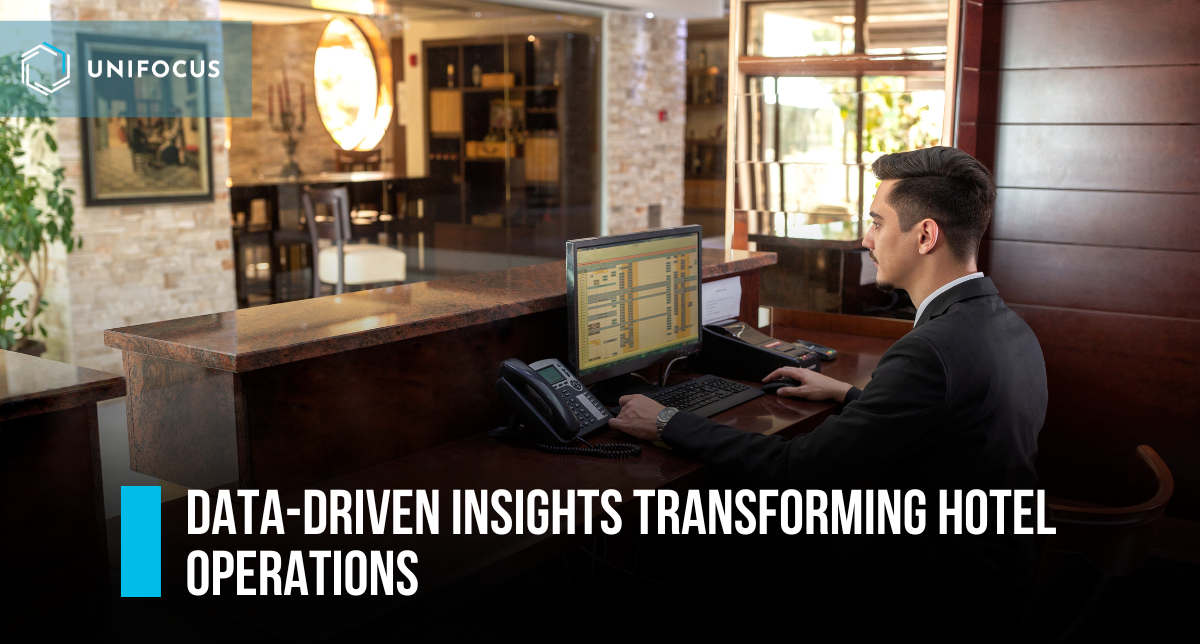May 14, 2019 - Mark Heyman, CEO and Co-Founder, UniFocus - Published in Hotel Executive - Acquiring a first-time guest is a key priority of every hotel organization. It's where strategy and tactics, buoyed by budget, create awareness, interest, engagement and sales-what marketers refer to as the path to purchase.
Once hosted, the guest will-you hope-return and be inspired to recommend your property to family members, colleagues and friends, based on that positive first experience. To what extent can you, as hotelier, get inside the guest's mind and help guide the journey to returning and recommending?
The post-stay satisfaction survey is a basic tool for understanding how the experience has fared in the guest's mind. The operative word here is "basic." I know from four decades of experience that guest satisfaction data alone won't provide the insights you need to ensure the outcome you seek. It is much more complex. In fact, a guest's likelihood of returning and recommending hinges on every aspect of what your hotel delivers-the service experience, the quality of the product-as well as the guest's sense of loyalty to your hotel or brand. Short of following each guest throughout his or her stay, how can you understand, after the fact, the likelihood of a thumbs-up or thumbs-down?
Looking at guest satisfaction in a vacuum is as meaningless to a hotel operator as an 85-percent test score is to a student if he or she can't see which answers were right and which were wrong, or understand what factors contributed to those right and wrong answers. Influencing your guests' intent to return and recommend requires identifying what data you need to track, streamlining it, and looking at it from an interactive standpoint. Strategic analysis is key.
Think of it this way: The intent to return and recommend is the dependent variable in the whole service equation. Information garnered through feedback, whether guest surveys, comment cards or online review sites, can be used in operations to spur improvements or to highlight where a hotel is doing very well. But the success of those efforts depends on a range of factors, from your hotel procedures to employee skill levels, availability, timing, attitude and of course product quality. All these factors influence the "moments of truth" that comprise a guest's experience. The more of those moments that meet or exceed a guest's expectations, the more likely your guest will be to choose your hotel or brand again and, importantly, promote it to others, becoming a de facto brand ambassador.
Moments of Truth
Moments of truth begin with the guests' first contact with your hotel and continue with every touchpoint along the way: The curb appeal when they drive up to your door. How they were welcomed by your staff. Their impression of the lobby and the front desk. The cleanliness and comfort level of their accommodations. The quality of every interaction they have with your employees. All of this is filtered by the guest's expectation of what the experience should be. The level of expectation is, in each case, influenced by your hotel's position in the market; a select-service hotel will be judged by a different standard, for example, than will a luxury resort.
Moments of truth add up to a base level of expectation for your guests. If a guest steps into the elevator and it hasn't been properly cleaned, your hotel has failed a moment of truth. If the guest walks past a manager and the manager's eyes are down, that's another failed moment of truth. No hotel can achieve perfection every time, and the moments you hit can help compensate for those you miss. But if the misses add up, an apology, or even an offer of a free stay, won't necessarily win back your customer. Using data wisely can help you fine-tune your operation to focus on winning those truth moments and minimizing the risk of misses.
Value Perceptions
When guests choose your hotel, the rate they pay can create an expectation of the value of that payment. A diner who spends $26 on a full steak dinner will have a different expectation about that meal than someone who pays $50 for the steak a la carte. Likewise, guests will have a different perception of what their experience should be at an airport hotel than a five-star property in the center of the city. Their expectation also will be influenced by the image presented in marketing materials as well as by online reviews from other guests, not to mention word-of-mouth from others whose stay has preceded theirs.
As an operator, you're trying to create the right mix of moments that align with or exceed that guest expectation. The key is understanding which ones matter most. Certain moments are more important than others. Some you can afford to miss (nobody's perfect), albeit not too often, and still nurture the customer, fostering loyalty. A lack of hot water in the shower will probably have a larger and longer-lasting impact on the guest than a slightly dusty windowsill or a smudged window, for instance.
The Importance of Engagement and Attitude
For years we have known that guest perceptions are directly related to the service experience which, in part, relates to employee engagement. But the other aspect of the service experience is the quality of delivery. It is not enough anymore to have the right number of people with the right skills at the right time (in other words, when the guest desires service). Staff members must also approach the interaction with the right attitude if they are to influence the guest's intent to return and recommend.
In the current climate, and particularly with today's shifting workforce demographics, it becomes more important than ever to integrate employee attitudes and engagement into the overall service delivery process. But even with heightened engagement and attitude, misallocation of your human resources still can create an environment in which service falls short.
For instance, it's not enough for your metrics to measure the satisfaction of the guests your hotel has served. Your systems need to be able to show you the number of guests you were unable to accommodate based on staffing guidelines and parameters.
How Much Revenue is Walking out the Door?
Most forecasting systems are based on history-data on past business levels. But do you know how much revenue might be walking out the door due to inadequate staffing levels? Rather than look at past business only, it is wise to examine whether you are right-staffed to handle the business you could be getting. You also want to assess whether your team members are engaged enough to take good care of the guests you have and to identify when there is too much business to handle based on existing staffing levels.
When the latter goes unchecked, would-be guests-particularly in restaurants and other hospitality outlets, leave in frustration without being served. Scoring well on other moments of truth- front desk, guest room, etc.-can be erased by an overnight guest who has a less-than-satisfactory experience at a dining outlet.
How Granular is your Guest Satisfaction Data?
If someone rates their experience at your hotel as a seven on a scale of one to 10 and you don't understand what aspects would have made that a nine, you're missing an opportunity to improve the experience. Were they made to wait too long to dine in one of your restaurants? Did the guestroom floor they were on impact their experience? Did their room face an elevator? Did the rate they paid influence their perception? Without granular, integrated data, your system can't provide you with that information and you're probably missing opportunities to drive more intent to return and to recommend.
Eliminate Siloed Data
Historically, hotel data has been siloed. Marketing has focused on guest satisfaction while human resources has focused on employee engagement and operations on productivity. But optimizing workforce performance requires breaking down those silos and looking at the relationships between the guest, employee and cost experience.
Your hotel can be very productive but garner low engagement scores. The goal is to have everything in balance or at least close to balance-skills, attitude, availability, timing and quality. Furthermore, these factors influence each other. Let's say you have a staff with good skills and great attitudes but availability and timing are off; in other words, you're understaffed. This imbalance can have a negative effect on attitude and even skilled delivery of the service. If you're trying to get to the number 100, and skills, availability, timing and quality each score a 20 but attitude scores only a five, you don't meet your goal. And that lack of attitude can drag down some of the other factors.
Likewise, if product quality scores a 30 but every other factor scores below 20, you still don't make it to 100. It's a matter of balancing the data and seeing how each contributes to perception for the customer. It's a holistic, rather than siloed, approach. It requires a mindset shift. Once it is understood and implemented through process and technology, it is the path to maximizing profitability.
Another way of thinking about this approach, specifically for human resources, is to change where the line item appears in your profit and loss statement. Now, it is generally charged to the undistributed costs, or below gross operating profit (GOP). Just consider the shift in perspective if it were moved up as part of GOP. Training, development, and employee acquisition would be considered in a different light, turning what has been viewed as a cost into an investment. That's food for thought.
The Right Technology Pulls it Together
All aspects of workforce performance, as well as the quality of your product and cost, must be aligned if you are to meet the most important expectations of your guests. In this era of data deluge, however, to avoid overburdening your managers, integrating data must go hand in hand with streamlining it. There are technological solutions that do so while also simplifying the complex tasks of forecasting, planning and scheduling that are necessary to optimize your workforce and, in turn, positively impact guests' intent to return and recommend. We'll delve more into that in a future article.






